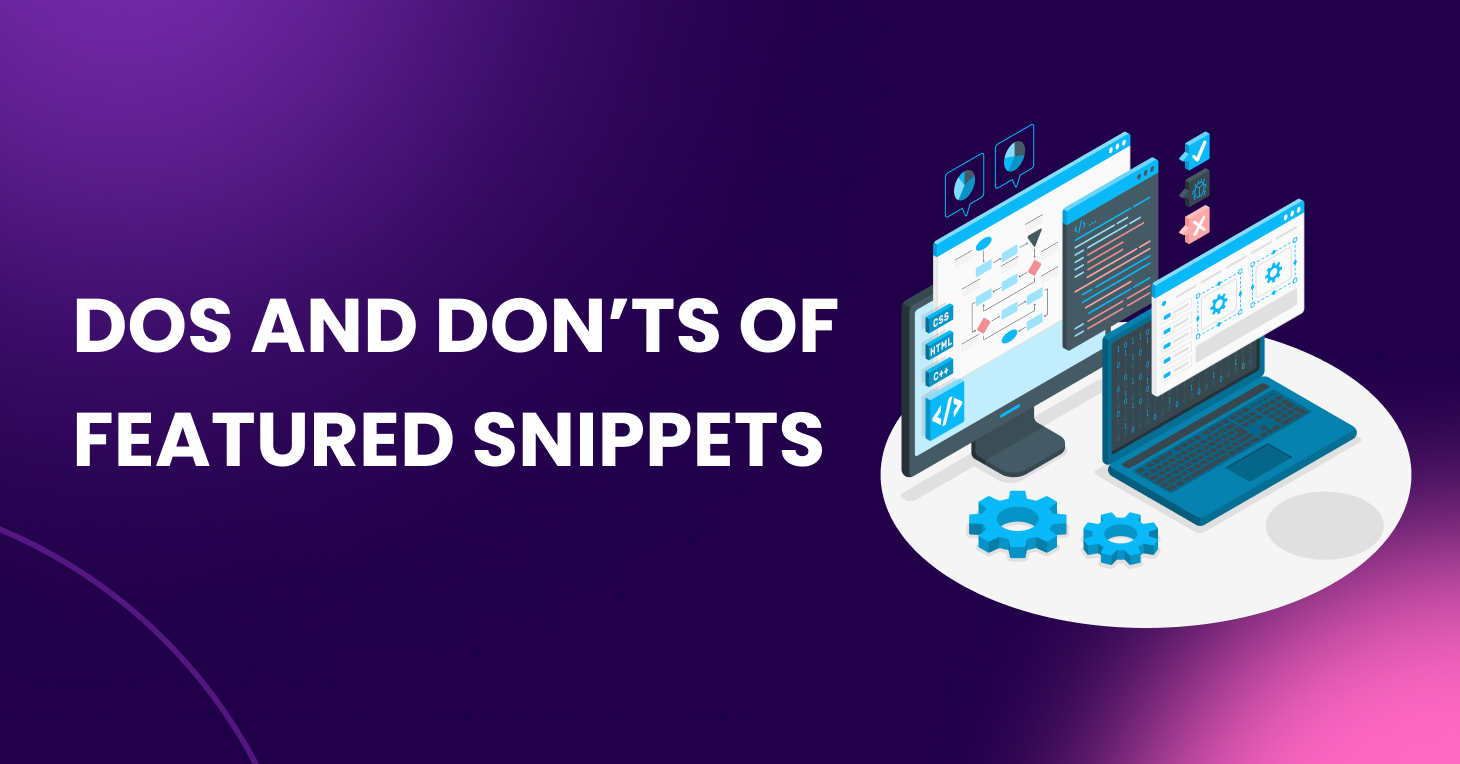How To Get Featured Snippets: Optimization Tips
The Different Kinds of Featured Snippets
Optimising content to attract website traffic can be tough for small businesses. Luckily, featured snippets can increase your chances of getting noticed on a SERP.
What are featured snippets?
Click Here – Free 30-Minute Strategy Session
Be quick! FREE spots are almost gone for this Month
Free Quote
- Quick answers to user questions displayed at the top of a SERP
- Before top organic search results for a keyword
- Can help expand the reach and draw traffic
Four types of featured snippets:
- Paragraphs
- Tables
- Lists
- Videos
How to design your content for featured snippets:
- Provide direct answers to common questions
- Use clear formatting with headings and bullet points
Don’t miss out on the benefits of featured snippets! Start optimizing your content today to increase your website traffic.
Learn More:Ultimate Guide to SEO Content Creation!
Understanding Featured Snippets
Featured snippets are short and quick answers to a user’s query that appear at the top of an organic Google SERP. They are also known as “Position #0”. They are not created by Google but are pulled directly from a webpage found in its index.
Importance of Featured Snippets
Why are featured snippets important?
- They provide a concise answer to a user’s query, making their life easier and improving their search experience.
- They increase the click-through rate (CTR)to your website by grabbing the user’s attention and presenting your business as an authority on the subject.
- They indicate that your content is valuable, effective and well-organized.
- They help you capitalise on voice technology by allowing virtual assistants to use your content to answer user queries.
- They increase “no-click searches,” meaning users already find what they are looking for and are more likely to purchase if they click on your link.
Advantages of Featured Snippets
Advantages of featured rich snippets:
- Increases traffic to your website
- Increases your credibility
- Helps weed out users not looking to buy
- Helps evaluate the effectiveness of your content
Make sure to optimize your content for featured snippets to improve your search rankings and expand your reach
Featured snippets are an important aspect of search engine optimization (SEO), as they help websites attract more traffic by providing concise answers to users’ queries. There are several types of featured snippets that Google and other search engines use, depending on the type of information a user is searching for.
Here are some of the most common types of featured snippets:
- Paragraphs: These snippets provide users with a brief definition or a piece of information on a topic. They are ideal for straightforward queries, where users are seeking basic information.
- Tables: Table snippets help users visualize data for different types of comparisons. They are commonly used for queries related to rankings, statistics or comparisons between different products.
- Lists: List snippets can be used to rank items, show the steps of a process, or identify different products. They can be ordered or unordered and are useful for queries related to “best of” lists or different features of a product or service.
- Videos: Video snippets are featured when a video provides the best answer for a user’s query. They are useful for “how-to” queries and can be an effective way to attract more traffic from YouTube, which is one of the largest search engines in the world.
Learn More:How to Increase Organic Traffic

Tips for Getting Your Content Ranked in a Featured Snippet
Here are some tips to help you optimize your content and increase your chances of appearing in a featured rich snippet:
- Identify the questions your target audience is asking: Start by researching the questions your target audience is asking about your topic. Tools like Google’s “People Also Ask” feature and AnswerThePublic can help you find popular questions related to your topic.
- Create content that provides a clear and concise answer: Your content should be structured in a way that provides a clear and concise answer to the question you are targeting. Use short paragraphs, bullet points, and headers to break up your content and make it easier to read.
- Use relevant keywords: Make sure to include relevant keywords in your content that are related to the question you are targeting. Use them in your heading, subheadings, and throughout your content.
- Provide additional context: While it’s important to provide a direct answer to the question you are targeting, you should also aim to provide additional context that will help the reader better understand the topic. This can include statistics, examples, and other relevant information.
- Optimise your meta descriptions: Your meta description should be optimised to provide a clear and concise summary of your content. Make sure to include the question you are targeting and a brief answer to entice users to click through to your content.
- Use structured data: Structured data can help search engines better understand the content on your page and increase your chances of appearing in a featured snippet. Use schema markup to highlight the question and answer on your page.
- Monitor your results: Keep track of your search rankings and look for opportunities to improve your content. Use tools like Google Analytics and Google Search Console to monitor your traffic and identify areas for improvement.
By following these tips, you can increase your chances of appearing in a featured snippet and drive more traffic to your website. Remember to focus on providing valuable content that answers your audience’s questions and provides additional context to help them better understand the topic.
Learn More:Schema Markup – What is it & Why is it Important for SEO?

Maximising Clicks as a Featured Snippet
Optimising your content for featured snippets can significantly boost your website’s CTR. With the right SEO tools and techniques, you can secure a featured snippet and improve your chances of ranking on the first page of Google. Building organic traffic requires consistent effort and time, but it’s worth it to increase your business’s reach and success.

Dos and Don’ts of Featured Snippets
Dos:
- Identify the keywords you want to target for featured snippets and optimise your content accordingly.
- Structure your content in a clear and organized way with headers, bullet points, and tables to make it easier for Google to pull relevant information.
- Provide direct, concise answers to user queries in your content.
- Use schema markup to help search engines better understand your content.
Don’ts:
- Don’t stuff your content with irrelevant keywords or information just to try to rank for featured snippets.
- Don’t use vague or incomplete answers to user queries in your content.
- Don’t rely solely on short-form content like lists or tables to try to secure a featured snippet; longer-form content can be just as effective.
- Don’t neglect to update your content regularly and monitor your featured snippet performance to ensure it’s still relevant and accurate.
Learn More:What Is Focus Keyword?
Conclusion
In conclusion, featured snippets can be a powerful tool for improving your website’s visibility and driving traffic. By following the dos and don’ts we’ve outlined, you can increase your chances of securing a featured snippet and reaping the benefits that come with it.
If you need help with your featured snippet SEO strategy, don’t hesitate to reach out to Traffic Radius for expert guidance and support. Let’s work together to take your website to the top of the search rankings!








LEAVE A REPLY